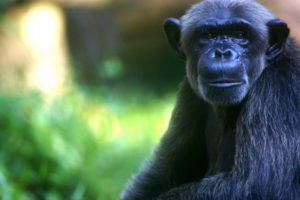
In a fascinating new study just published in The journal BMC Evolutionary Biology, researchers have discovered a possible relationship between one of the most common causes of back pain—disc herniation—and the shape of the spine.
Now, that may not seem all that exciting or extraordinary, but the researchers found that people who have back pain often have a lesion known as a “Schmorl’s node” lodged in between the bones of their spines. And here’s where their research got very interesting: they also report that the spines of people with chronic back pain tend to be closer in shape to the spines of chimpanzees than their human comrades.
In other words, back pain sufferers may have gotten the short end of the evolution stick!
Could it really be that people who suffer from back pain just don’t have spines that have evolved as much as those who live life back pain free?
Schmorl’s nodes occur as a result of strain or stress on the spine. They are essentially spaces in the vertebrae where the cartilage slips into the surface of the vertebral body, often causing inflammation, pain, and difficulty walking. As we evolved from four-legged creatures to upright humans who could walk on two feet, our spines had to evolve to accommodate our new physiology and locomotion. But perhaps some of us (which would actually be a good portion of us since more than 80 percent of us will experience back pain someday) have backs that are stuck in an ancient relative from the chimp family and haven’t fully evolved yet to human standards that can handle the pressure of walking upright.
It’s an intriguing theory to say the least. It’s even gotten a name: the ancestral shape hypothesis. This hypothesis may also explain some other spinal diseases like osteoarthritis. The researchers plan on examining the spines of more ancient and modern humans to further study the notion. And I can’t wait to read about it.
–Jack Stern, M.D., Ph.D., F.A.C.S.




